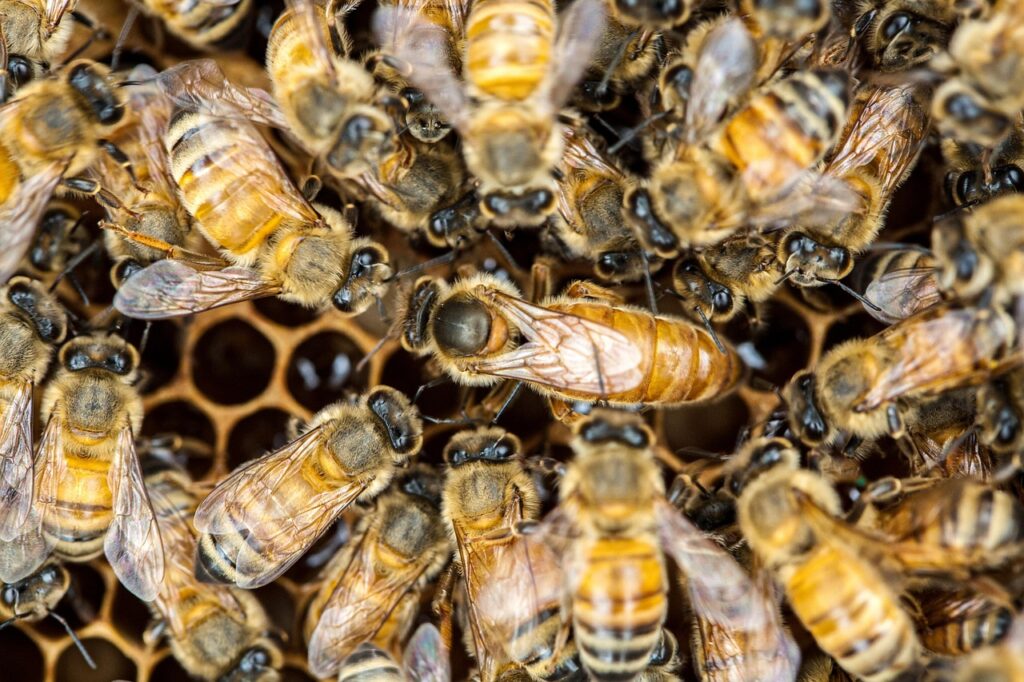How does only focusing on honey bees affect awareness of wild and native bee species
Focusing primarily on honey bees in public awareness campaigns and conservation efforts affects understanding and protection of wild and native bee species in several critical ways:
Aspect Effect of Honeybee-Centric Focus
Misplaced Conservation Priority Resources and attention disproportionately favor honey bees, which are not currently at risk, while many wild bees face significant declines and threats.[1][2]
Overshadowing Wild Bee Importance Wild bees contribute a majority of pollination for many crops and ecosystems (e.g., about 70% in the UK). Yet their role and needs are largely underrecognized compared to honey bees.[1][3]
Competition and Ecological Impact Large numbers of managed honey bees can outcompete native bees for floral resources, reducing wild bee abundance and disrupting plant-pollinator networks, sometimes harming native plant reproduction.[1][4][5]
Public Misunderstanding and Simplification The widespread narrative that “saving the bees” means saving honey bees leads to a lack of awareness about the diversity of native bee species and their unique ecological roles.[1][2][6]
Increased Honeybee Apiaries in Sensitive Areas Urban and even natural areas often see more honeybee hives introduced, which can negatively affect native bee populations at local scales, especially near apiaries.[1][7][2]
Neglect of Habitat Protection for Wild Bees Efforts focused on honeybee management can overlook the urgent need to preserve and restore native plant communities and habitats essential for wild bees, particularly in biodiversity “hotspots.”[7][2]
Potential Spread of Diseases and Pests Managed honey bees can transmit diseases and parasites to wild bees, further threatening native populations.[1][8]
Economic and Cultural Influence Honeybee-related industries and hobbyist beekeepers sometimes reinforce honeybee-focused narratives, which can skew public perception and conservation agendas away from native bees.[1][2]
In essence, concentrating on honey bees alone may inadvertently mask the declines and ecological importance of wild and native bees, which perform the bulk of pollination services in many systems.
It also risks ecological harm through competition and disease transfer.
Effective conservation requires broadening awareness to include native bee diversity, protecting their habitats, and managing honeybees in ways that minimize negative impacts on wild pollinators.
This more comprehensive approach fosters healthier, more resilient pollinator communities and ecosystems.
[Sources: 1, 2, 3, 4, 5, 7, 8, 9]
⁂
1. https://www.apicultural.co.uk/do-managed-honey-bees-compete-with-wild-bees-for-floral-resources
2. https://www.xerces.org/blog/want-to-save-bees-focus-on-habitat-not-honey-bees
3. https://www.aau.edu/research-scholarship/featured-research-topics/beyond-honey-bees
4. https://naturalareas.org/docs/16-067_02_Overview-of-the-Potential-Impacts-of-Honey-Bees_web.pdf
5. https://besjournals.onlinelibrary.wiley.com/doi/full/10.1111/1365-2656.13973
6. https://conbio.onlinelibrary.wiley.com/doi/10.1111/csp2.293
7. https://extension.oregonstate.edu/catalog/em-9524-impact-beekeeping-native-bees-urban-settings
8. https://beelab.umn.edu/managed-bees-impact-wild-bees



